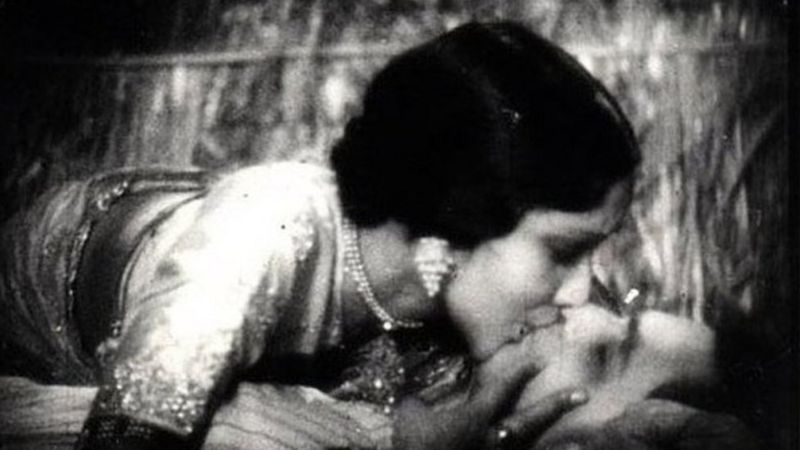
(FF Network) In the year 1933, the luminary of Indian filmmaking, Himanshu Rai, embarked on a bold cinematic journey with the release of his film ‘Karma’. Fresh from his sojourn in London, Rai not only directed but also played the protagonist, casting the enigmatic Devika Rani, his wife, as the leading lady. This project heralded their introduction to the Indian silver screen, marking an unforgettable moment in cinema history.
‘Karma’ gained notoriety for a groundbreaking scene—a prolonged kiss, spanning a full four minutes, between Rai and Rani. This depiction of intimacy was not just pioneering for Indian cinema but was also considered a daring move on a global scale at the time. To this very day, the scene holds the record for the longest kissing sequence in the annals of Indian film industry.
The saga of Devika Rani took a dramatic turn in the mid-1930s. By this time, Rani had ascended to the zenith of stardom in India, thanks in large part to her influential roles in her husband’s movie ventures. But the plot of her own life took an unexpected twist during the making of ‘Jeevan Naiya’, produced by Bombay Talkies, a film studio owned by Rai. It was on this set that she was romantically entangled with her co-star, Najm-ul-Hassan, leading the duo to an impulsive decision to elope, thereby halting production in its tracks.
The event sent shockwaves through Bombay Talkies, provoking Rai into a fury. In a desperate bid to salvage the project and his personal life, he dispatched Sashadhar Mukherjee, the studio’s trusted sound engineer who shared a close sibling-like relationship with Rani, to negotiate her return. After locating the couple, Mukherjee relayed Rani’s terms for her comeback—a considerable financial compensation. Although Rai acquiesced to these demands, his feelings were soured, prompting vindictive actions that resulted in Hassan’s dismissal and abrupt end to his acting career.
In a twist befitting a cinematic plot, Rai’s subsequent casting choice to fill the vacated role was none other than Mukherjee’s brother-in-law, Kumudlal Ganguly. Initially an unassuming lab assistant at the studio, Ganguly hesitantly stepped into the limelight. Little did he know that this opportunity would catapult him into superstardom, eventually becoming widely acclaimed under the screen name Ashok Kumar.
This intriguing chapter in Indian cinema weaves talent, scandal, love, and destiny into a rich tapestry, showcasing an era where art mirrored life, and life, in turn, became a legendary narrative forever etched in the annals of film history.


